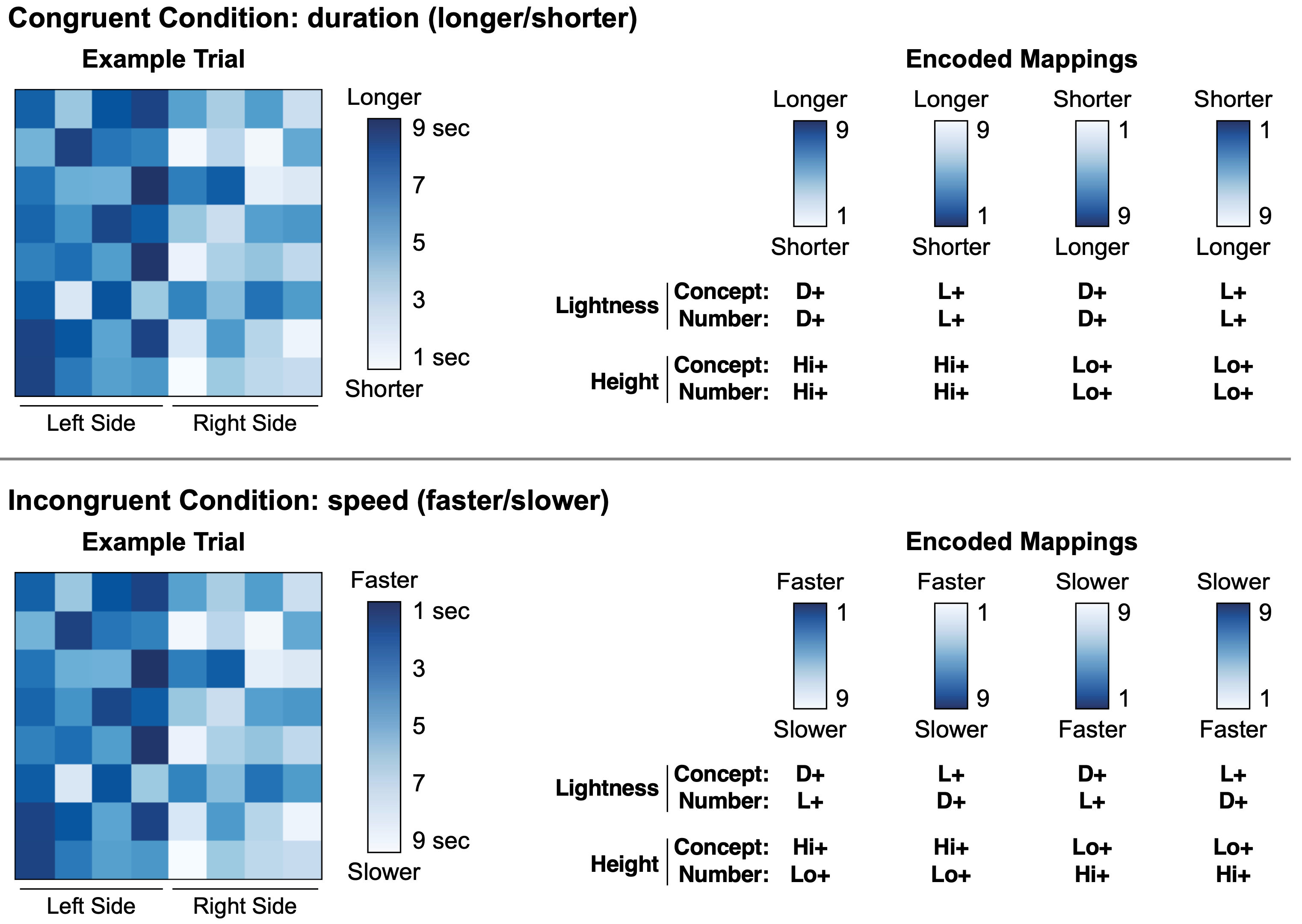Our paper, “More of what? Dissociating effects of conceptual and numeric mappings on interpreting colormap data visualizations,” was published in Cognitive Research: Principles and Implications.
AUthors: LEXI SOTO, MELISSA A. SCHOENLEIN, and Karen B. Schloss

In visual communication, people glean insights about patterns of data by observing visual representations of datasets. Colormap data visualizations (“colormaps”) show patterns in datasets by mapping variations in color to variations in magnitude. When people interpret colormaps, they have expectations about how colors map to magnitude, and they are better at interpreting visualizations that align with those expectations. For example, they infer that darker colors map to larger quantities (dark-is-more bias) and colors that are higher on vertically oriented legends map to larger quantities (high-is-more bias). In previous studies, the notion of quantity was straightforward because more of the concept represented (conceptual magnitude) corresponded to larger numeric values (numeric magnitude). However, conceptual and numeric magnitude can conflict, such as using rank order to quantify health—smaller numbers correspond to greater health. Under conflicts, are inferred mappings formed based on the numeric level, the conceptual level, or a combination of both? We addressed this question across five experiments, spanning data domains: alien animals, antibiotic discovery, and public health. Across experiments, the high-is-more bias operated at the conceptual level: colormaps were easier to interpret when larger conceptual magnitude was represented higher on the legend, regardless of numeric magnitude. The dark-is-more bias tended to operate at the conceptual level, but numeric magnitude could interfere, or even dominate, if conceptual magnitude was less salient. These results elucidate factors influencing meanings inferred from visual features and emphasize the need to consider data meaning, not just numbers, when designing visualizations aimed to facilitate visual communication.
Reference: Soto, L., Schoenlein, M. A., & Schloss, K. B. (2023). More of what? Dissociating effects of conceptual and numeric mappings on interpreting colormap data visualizations. Cognitive Research: Principles and Implications, 8, 38, 1-17. PDF
